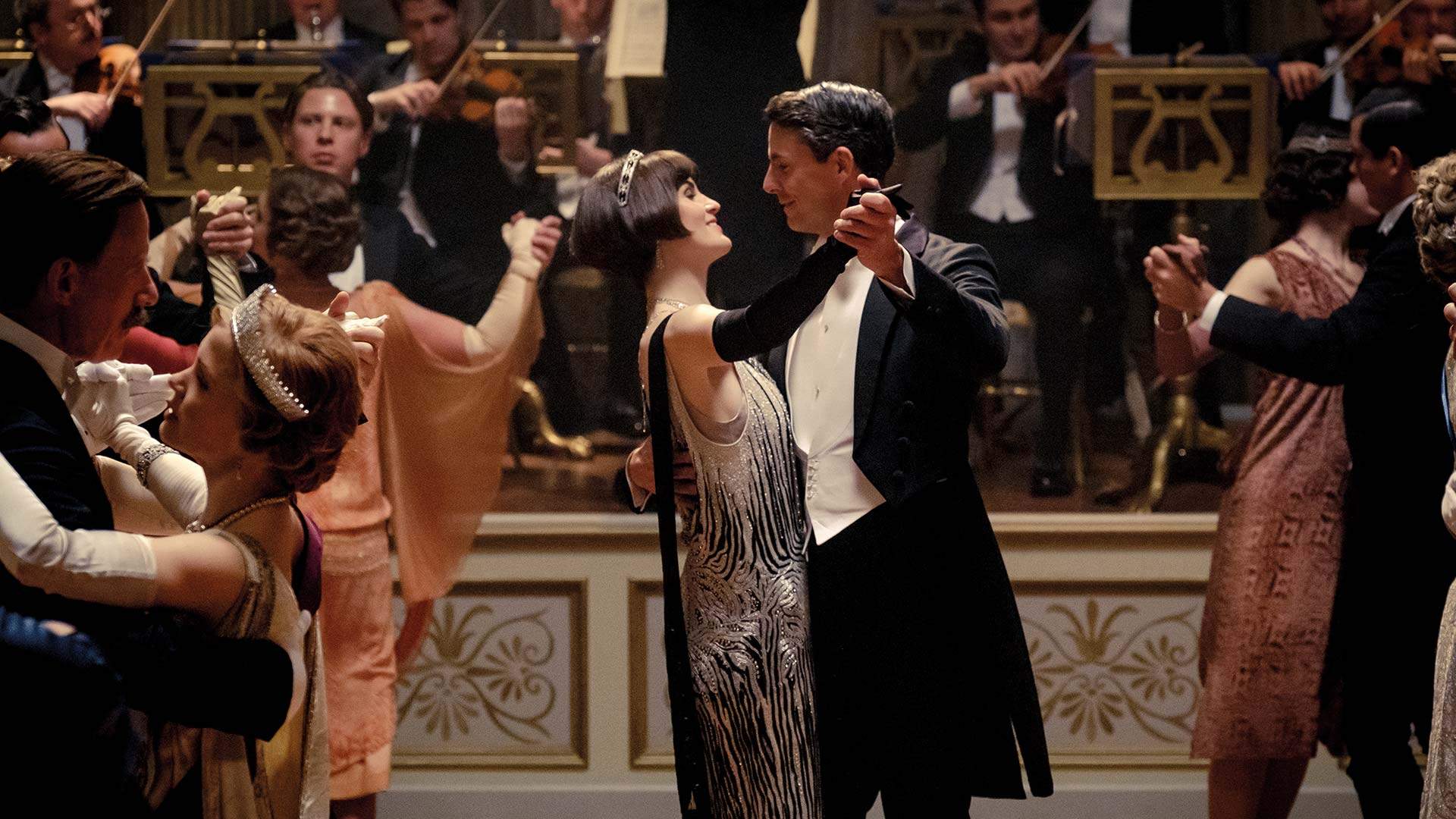Downton Abbey
The beloved British period drama hits the big screen for a lavish last hurrah.
Overview
Downton Abbey has always been the TV equivalent of a cup of tea: warm, soothing, a tad sugary, but reliably serving up an escape from everyday woes. Airing for six seasons from 2010–15, the 1920s-set British TV series was a hit for many reasons, letting audiences get lost in the soapy intrigue of a lavish Yorkshire mansion chief among them. That, and watching Maggie Smith sling barbs, make quips, and put anyone in their place, a skill that the veteran actor wields oh-so-well. It's been nearly four years between sips, but both the show and its beloved octogenarian are back. They're on the big screen this time around, however this is the epitome of a television movie. It's filled with everyone's favourite characters, hits all of the familiar marks, overflows with slim subplots that get wrapped up before the end credits, and leaves viewers feeling happy and cosy.
With the film taking place in 1927, more than a year has passed for Downton Abbey's inhabitants, but it's business as usual at the titular manor. That's until royal news arrives, with King George V (Simon Jones) and Queen Mary (Geraldine James) planning to stop by for a visit. Naturally, excitement abounds among the aristocratic Crawley family and their loyal staff. It's the latter that have to weather the most obstacles, though. Dreaming of attending to Their Majesties, they soon discover that the Crown will be bringing their own servants with them. That's not the Downton Abbey way, of course, and the house's maids, butlers, cooks, footmen and the like won't give up their chance to shine for the kingdom without a fight.
There's plenty of story to go around, and plenty of people to navigate the regal antics. Patriarch Robert Crawley (Hugh Bonneville) isn't too fussed, and nor is his wife Cora (Elizabeth McGovern), although that's largely because their daughter, Lady Mary (Michelle Dockery), takes charge. His mother Violet (Smith) is spoiling to confront her cousin Maud (Imelda Staunton), who's also the Queen's lady-in-waiting, about an inheritance. Among the upstairs residents, Tom Branson (Allen Leech) gets the most interesting narrative arc — an ex-chauffeur who married into the family, and an Irish Republican, it's suspected that he may cause trouble during the royal stay. Downstairs, retired butler Carson (Jim Carter) has been asked back for the occasion, much to his replacement Barrow's (Rob James-Collier) dismay. Kitchen maid Daisy (Sophie McShera) isn't quite ready to plan her wedding to footman Andy (Michael C. Fox), and Mary's maid Anna Bates (Joanne Froggatt) is on the trail of a thief. The list goes on, with more than 25 characters receiving substantial screen-time.
Penned by Julian Fellowes, like all 52 episodes of the TV show, Downton Abbey takes the more-is-more approach. This cinematic last hurrah is packed with as much as it possibly can manage, which is great news for existing fans, but comes across as rushed for newcomers. No one gets too much attention, no storyline feels particularly important and there's little in the way of tension. The blueprint of each subplot gleams as obviously as the mansion's lavish surfaces, too, even when the movie keeps jumping from one minor drama to the next. Rather than telling a rousing new tale in a fleshed-out fashion, Fellowes and director Michael Engler are more concerned with letting Downton diehards spend a bit of extra time with the well-to-do crew and their kindly subordinates. The pair do just that, however that doesn't mean uninitiated viewers aren't catered for.
Nearly two decades after winning a screenwriting Oscar for Gosford Park, actor-turned-writer Fellowes has become the fount of all knowledge regarding English upstairs-downstairs shenanigans — and even when he's keeping things light and slight, the results are enjoyable to watch. As well as possessing an ear for the rhythm of everyday banter among posh and ordinary folks alike, he understands the class clashes between them, plus the similarities that draw them together. He also knows and conveys a crucial fact: that the dynamic between the upper echelons and the help isn't as consigned to the past as it may seem. Downton Abbey is a historical fantasy where scant little changes, but there's a reason that the period program struck such a chord over the last decade. As the political landscape becomes more and more fractured around the globe, the series recognises society's divisions while leaning into comfort, safety and stability in a gentle and unchallenging manner.
Comfort, at least visually, might just be an understatement. There isn't much to rationalise Downton Abbey's release in theatres instead of on TV (other than the likely box office windfall, that is), but the lavish costuming and grand set design look a treat on the silver screen. Indeed, other than Smith doing what the program has always tasked her with doing best, the film's imagery is the star of the show. While the rest of the cast perform exactly as they're asked — as is to be expected nine years after the series first premiered — this isn't an actor-driven affair. Really, it's a big hug goodbye in movie form, offering up a huge embrace to eager aficionados and giving a pleasant-enough squeeze to everyone else.





